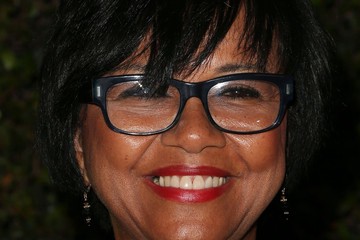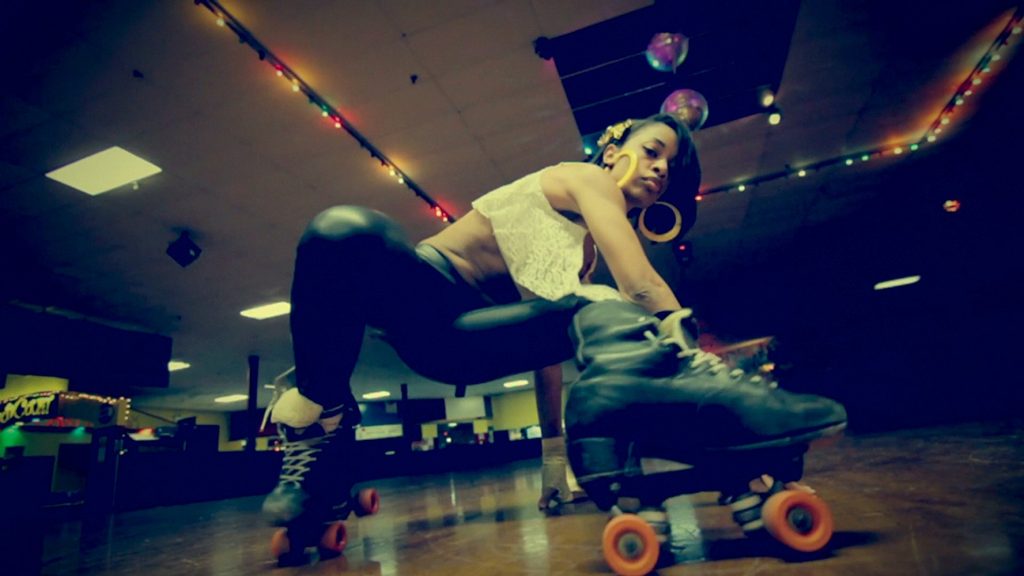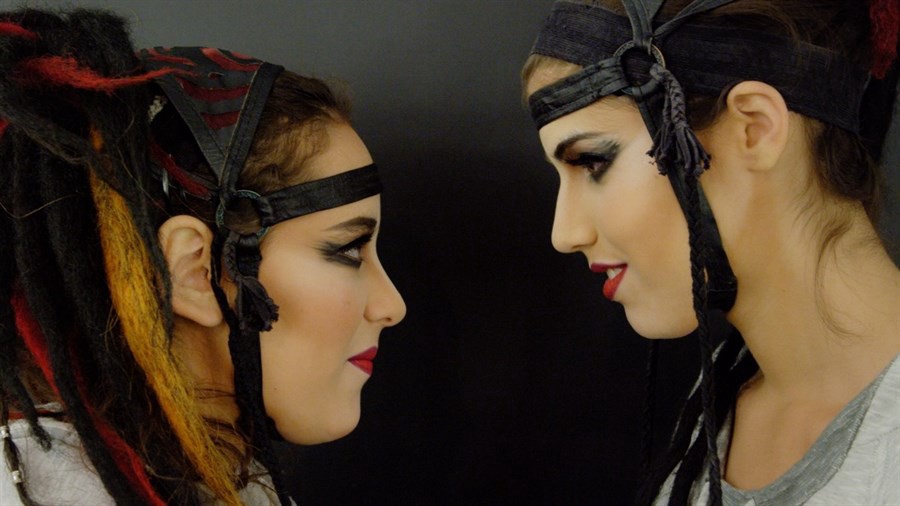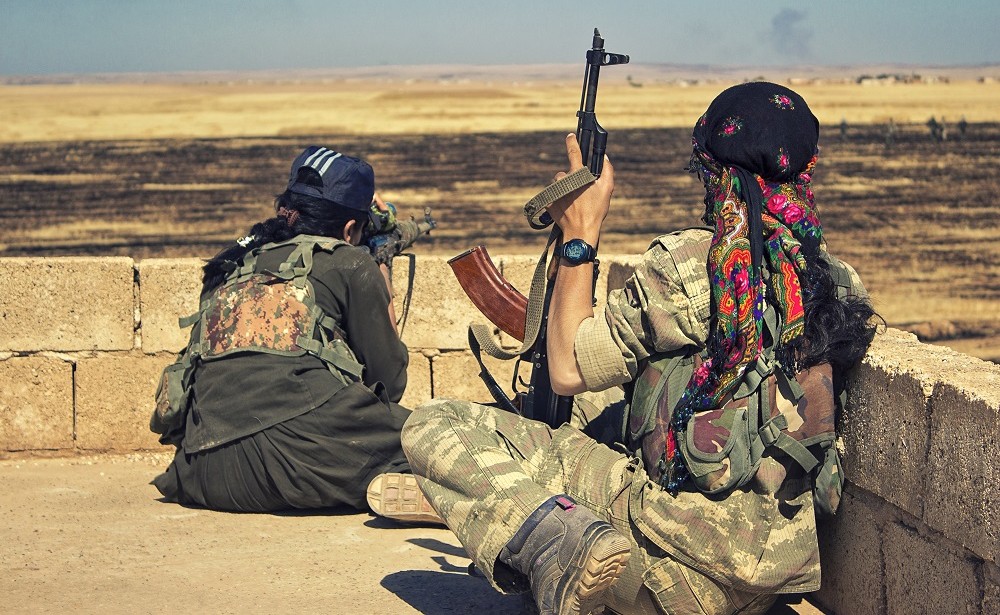It’s at times like these that twenty-six letters seems awfully few. Not that this list is intended as an encyclopedia. Instead, please see it as a mere sample of the films worth seeing, the talents worth tracking, the prejudices worth fighting, and the debates worth having if you care about women and their role in this simultaneously depressing and inspiring industry.
There are no criteria for inclusion, other than the obvious one. I have tried at least to namecheck some of the films and filmmakers I was not able to discuss at greater length, but regrettable exceptions to this rule begin with directors Joanna Hogg, Kelly Reichardt and Clio Barnard and extend indefinitely (feel free to add your vote below). I also tried to maintain my focus on the indie-spirited. So while I highlight various performances, they don’t include any of the Oscar Best Actress frontrunners. And though you will find discussion of studio releases as part of the wider film culture, there is sadly no further mention of Katniss Everdeen.
But with that caveat, allow me to commemorate 2013 as the year that, for better or worse, gave us the following:
A is for the African-American Film Festival Releasing Movement
Ava DuVernay has not exactly had a quiet year as a director. Following an episode of Scandal, she is preparing to write and direct Martin Luther King film Selma — a rare instance of a female director being granted the power to tell the story of a major male historical figure. Alongside her own projects, she has been plotting a bold expansion of AFFRM, a grassroots distribution movement aimed at cultivating an audience for black independent cinema — a niche repeatedly under-estimated and under-served by the wider indie film scene. The enthusiastic response to AFFRM’s latest funding drive leaves DuVernay and her fellow so-called “rebels” set for a rowdy 2014.
B is for Before Midnight
The third part of Richard Linklater’s acclaimed series heralded the return of Celine, one of American cinema’s most well-sketched feminist creations. The evolution of the character has been strongly guided by Julie Delpy, with a co-writing credit on the past two films, and this year she was more willing than ever to push Celine into areas that weren’t necessarily likable, but resonated with authenticity. Meanwhile, back on the interview circuit, Delpy was well aware that her complex, difficult and sexually engaged character was something of an anomaly for actresses her age. “It’s funny,” she quipped. “In a year, I could probably play Christian Bale’s mother, but I’m already too old to play Clint Eastwood’s girlfriend.”
C is for Cheryl Boone Isaacs
In 2012 the Los Angeles Times found that Oscar voters were 94% white and 77% male. And while that may still be close to the case, this year AMPAS took steps in the right direction, appointing its first black and second female president. Cheryl Boone Isaacs is no stranger to firsts — in 1997 she became the first African-American woman to run a studio marketing department at New Line. Upon her appointment in July, she made clear her priorities, explaining, “We have increased the diversity with the inclusion of new members, and we are going to continue on this road. It’s very important to me.”
D is for Double Standards
Last month, Evan Rachel Wood took to Twitter to call out the MPAA when their cuts to her film Charlie Countryman involved the deletion of a scene in which her character received oral sex from Shia LaBeouf. Wood was incensed, calling it “a symptom of a society that wants to shame women and put them down for enjoying sex.” Whatever the specifics of the case, the MPAA’s distaste for scenes involving female sexual pleasure was well-documented in 2006’s This Film is Not Yet Rated. But Wood had some choice words for such an attitude: “Accept that women are sexual beings. Accept that some men like pleasuring women. Accept that women don’t have to just be fucked and say thank you. We are allowed and entitled to enjoy ourselves. It’s time we put our foot down.”
E is for Enough Said
Such is the lack of directing opportunities for women in the American studio system that Nicole Holofcener’s modest indie romance is currently the second highest-grossing film of the year directed solely by a woman (behind Kimberley Peirce’s Carrie remake). Throughout her career, Holofcener has maintained an unapologetic focus on the lives of women of a certain age and status, a stance which has gained her sneers as well as fans. But this year, critics and audiences alike embraced her spritely romantic comedy with its pairing of the late James Gandolfini and Julia-Louis Dreyfuss, on sparkling form in her first-ever feature film lead at the age of 52.
F is for Frances Ha
Like Julie Delpy, Greta Gerwig co-wrote her lead role in one of the year’s best female-driven films. Some called it lightweight, as if the whole point wasn’t Frances’ attempts to breeze over the daily problems of a mostly privileged life, allowing her reserves of deep melancholy and disappointment to accumulate almost unnoticed. Facilitating this unusual tonal quality was the less heralded contribution of 31-year-old editor Jennifer Lame. Hired as assistant to Tim Streeto and then promoted when he dropped out to work on Boardwalk Empire, her featherlight sensibility proved to be the heart and soul of the film, and Noah Baumbach has since recruited her for his next two features.
G is for Golden Globes
While the Oscars offered us the delights of Seth MacFarlane and “We Saw Your Boobs,” the Globes served up the irresistible pairing of Tina Fey and Amy Poehler — a superior choice not because they were women, but because they were actually funny. Meanwhile, Jodie Foster used her acceptance of the Cecil B. DeMille award to make the most high-profile (and idiosyncratic) coming-out speech of the year. While such an unexpected moment can hardly be anticipated for next year, Fey and Poehler are happily scheduled to return.
H is for Haifaa Al-Mansour
Her remarkable story as Saudi Arabia’s first-ever feature film director has been told many times, but those expecting Al-Mansour’s worldwide success to make her a pariah in her homeland were pleasantly surprised by the news that her country has selected Wadjda as this year’s Oscar submission. “We are very proud of the film as an authentic representation of our country and culture and are very pleased to see the themes and story of the film resonate with audiences well beyond our borders,” trumpeted Sultan Al Bazie, chairman of the kingdom’s nominating committee. While it hardly appeases the status quo for women in Saudi Arabia, as a public audience reaction it is quite some victory.
I is for In A World…
Lake Bell wrote, directed and starred in this brazenly feminist and very funny story of a woman attempting to make a name for herself in the staunchly male-dominated world of voiceover artists. Bell has a keen eye for the world she portrays, from her scathing satire of various male vanities to the troubling trend of women who adopt “sexy-baby voice.” Most remarkable is that its totally open exploration of gender discrimination never feels at all heavy-handed or preachy — a symptom of a narrative world that is not only unashamed but openly proud of its deference to the masculine.
J is for Jane Got A Gun
This film may not have even been released yet, but it hit the headlines for all the wrong reasons when director Lynn Ramsay was fired amid much acrimony on the first day of principal photography. While the truth of the situation is hard to ascertain, it remains a shame that this high-profile Western, already unusual for its female-centric storyline, has lost its female director. Nonetheless, with leading lady Natalie Portman still on board alongside cinematographer Mandy Walker, it remains an intriguing prospect for 2014.
K is for Kimberley Peirce
Carrie may not have met critical expectations, but the return of director Kimberley Peirce was refreshing all the same. With no other woman given sole charge of such a high-budgeted release this year, she was well-placed to speak out against institutional studio sexism, and didn’t hold back in a New York Times feature in which she revealed how heartbreaking it is to realize you have been treated differently because of your gender. “How many more movies could I have made? How many more actors could I have worked with? And you know, it would have been more. When you’re young, you feel invincible… but as you get older you start grieving a little. You’re like, ‘Wow, that’s a lost career.’”
L is for Lupita Nyong’o
One of the true breakout stars of the year, Nyong’o went from unknown to Oscar frontrunner thanks to her heartbreaking performance in 12 Years a Slave. If Nyong’o herself remained something of an unknown quantity, the recent Hollywood Reporter roundtable revealed her to be sweet-hearted and endearing as she tearfully explained to Oprah Winfrey how The Color Purple had inspired her to become an actor. “I grew up in Kenya, and a lot of our programming was from all over the world, and we didn’t see ourselves onscreen. It was very rare that you’d see people that look like me. And there was Whoopi Goldberg and Oprah and everything. It’s so meaningful to be sitting here beside you.”
M is for Melissa Silverstein
This slot could have gone to the New York Times’ Manohla Dargis, who made headlines with her critique of what she saw as the problematic male gaze in Blue is the Warmest Color. But underpinning her criticisms was a wider insistence on the importance of finding and giving a platform to the female filmmakers whose perspective can only enrich the discussion. One person making an active effort to fulfill that task is Melissa Silverstein and her indefatigable Women and Hollywood blog, with its constant and essential spotlighting of female directors and their work. If you are not keeping up to date, you are missing out.
N is for NC-17
Talking of Blue is the Warmest Color, few can have failed to notice that the fevered focus of critical discussion was not Abdellatif Kechiche’s examination of class difference, or the pain of coping with personal heartache in the workplace, but a rather more headline-grabbing element. Quelle surprise. The film was duly slapped with an NC-17 rating by the ever-flustered MPAA. New York’s IFC Center decided to flout the classification, opening their doors to “mature, enquiring teenagers” whom the institute felt could cope with the film’s lengthy running time and psychological intensity. In France, the film is deemed appropriate for anyone above the age of twelve.
O is for Over 40
This was the year that fortysomething A-listers proved their pulling power like never before. It remains to be seen whether Sandra Bullock, Meryl Streep, Judi Dench, Emma Thompson and Cate Blanchett can complete an unprecedented over-40s sweep of the Best Actress Oscar category, but in terms of box office, the receipts are in, and Bullock and Melissa McCarthy alone have led their three star vehicles (Gravity, The Heat, Identity Thief) gross over $1 billion dollars worldwide since January. Indeed, alongside those latter two films, Jennifer Aniston’s top billing in We’re The Millers meant that the three biggest US comedy hits of the year all starred women over 40 — a landmark of debatable worth, but significant nonetheless.
P is for Paulina Garcia
It sounds like the most contrived of filming conceits, but I managed to watch Gloria twice without realizing that Paulina Garcia in fact appears in every single frame of Sebastian Lelio’s film. Garcia’s spellbinding role was emphatically co-authored by the actress, who improvised every line and choreographed every sex scene. The result is one of the year’s finest performances and most downright refreshing characters — or as critic Anne Billson put it, “after Blanche DuBois, Norma Desmond etc, how wonderful to see a fiftysomething female character who isn’t pathetic, needy, faded.” Quite.
Q is for Quotas
Are they needed? In June, I wrote about my own gender-related experiences on a film set and invoked the dreaded Q word. Meanwhile, Melissa Silverstein reported on Sweden’s all-too-unusual decision to divide state film funding equally between male and female talent. Nobody likes to praise unqualified any measure which seems to privilege the gender of an artist over any other qualities they may possess. But nor does there appear to be any more viable solution to the industry’s indelible sexism.
R is for Rachel Morrison
Fruitvale Station is gaining rapid awards traction for debut director Ryan Coogler, but less frequently noted is his collaboration with the film’s cinematographer Rachel Morrison. Her CV prior to the Sundance hit is eclectic, from Tim and Eric’s Billion Dollar Movie to an Emmy nomination for high school documentary Rikers High. But it is her work on Fruitvale Station that promises to place her among the elite in the notoriously male-dominated world of cinematography. If anyone can provide inspiration, it is last year’s occupant of this slot Reed Morano, whose career, profiled here last month, scaled ever-greater heights in 2013.
S is for See You Next Tuesday
There were any number of worthy contenders for this slot — Scarlett Johanson had a banner year for a start, and then there are directors Jill Soloway (Afternoon Delight), Amy Seimetz (Sun Don’t Shine), Stacie Passon (Concussion), Sarah Polley (Stories We Tell) and Sofia Coppola (The Bling Ring). But since this is Indiewire, it felt most appropriate to spotlight an as-yet-undistributed film, whose all-female cast provided a delightfully bitter breath of fresh air on this year’s festival circuit. Drew Tobia’s See You Next Tuesday follows Mona, played by a gutsy Eleanor Pienta, through the relentless humiliations of pregnancy, poverty and a horribly unwholesome relationship with her mother (a livewire Dana Eskelson). There is no greater mark of its brutal lack of sentiment than Mona’s grim alternative to a birth scene, which is best experienced on screen, then never spoken of again.
T is for Twitter
Love it or hate it, Twitter has become a fertile breeding ground for feminist discussion, from passionate defenses of the Bechdel test to the aforementioned sex-positive diatribe of Evan Rachel Wood. More edifying than the unholy spats are the voices it throws up — in my case, people like Marian Evans (@devt), tireless in her cheery advocacy of women’s causes, or MaryAnn Johanson (@maryannjohanson), author of the appealingly autonomous Flick Filosopher site (her strikingly critical review of The Heat, for example, should not be missing from the debate). If you can succeed in not getting sucked into the void, the conversation can be enlightening.
U is for Under 40
The most read and most widely debated Heroines of Cinema column this year was my highly subjective list of the ten most exciting young female directors in the world. While youth can be an asset in this industry, it does not seem to be so for female directors, absurdly scrutinized for everything from the validity of their ideas to their capacity to lead (by contrast, the industry’s thirst to discover its next boy genius remains unquenchable). An outcry on behalf of the directors who missed the arbitrary age limit led to a subsequent, complementary list: 15 women who made their feature debut after the age of 40.
V is for Valentine Road
Marta Cunningham, profiled by Shadow and Act as one of five black female directors of feature documentaries this year, debuted at Sundance with her powerful first-time feature. Cunningham spent four years piecing together the tragic backstory of Larry King, shot dead by his classmate after asking him to be his valentine. What she uncovers is not merely a story of adolescent homophobia, but a compellingly tangled network of damaged youths and misguided adults and institutions systematically pressurized away from love and compassion towards judgment and denial. Essential viewing.
W is for Wide Releases
Possibly the most depressing statistic of the year is that only two live-action films directed by women achieved a wide release in 2013: Kimberley Peirce’s Carrie and Kasi Lemmon’s Black Nativity. Peirce thus joined Jennifer Lee, co-director of Frozen, as the only two women with entries among the Top 100 highest-grossing films of the year. The trouble with having so few instances is that each is judged more harshly, potentially reducing the field of opportunity yet further. And that would be a sorry result for what is already a grotesquely unbalanced scenario.
X is for Adele Exarchopoulos
OK, so this is cheating, but perhaps that can be an excuse to focus on the non-X-rated elements of one of the year’s most misrepresented lead roles. Abdellatif Kechiche has been accused of harsh methods in extracting Exarchopoulos’s immersive performance in Blue is the Warmest Color, but the power of the resulting character study cannot be denied (even if you are, like me, only partially sold on the film as a whole). Like Kenneth Lonergan’s Margaret, the film’s three-hour running time grants an epic grandeur to the perpetually trivialized condition of female adolescence, as Exarchopoulos rises to the size of the canvas with the performance of her life.
Y is for Yaya Alafia
For as long as the MTV awards feel the need to hand out the dubious honor of Hottest Screen Couple, they could do far worse than David Oyelowo and Yaya Alafia in Lee Daniel’s The Butler. This was only the most high-profile of three roles played by Alafia this year in films by black directors — she also appeared in Andrew Dosunmu’s Mother of George and Neil Drumming’s Big Words. Such parts are a clear source of pride. Discussing her Butler role with Latina magazine, Alafia explained, “We need stories that represent the work people like my parents who were active in the Civil Rights Movement did. This is how we will be able to learn and move forward with society.”
Z is for Zero Tolerance
Some actors play the Hollywood game, some hedge their bets, and others stick furiously to their principles. One of the most lively presences on the interview circuit this year was Emma Thompson, back with a bang in Saving Mr Banks. During the Hollywood Reporter actress round table, she revealed that her latest role was rather more dignified than some she has been offered in the past. “There was a patch of time when I was in my thirties and just started [being offered] a whole string of roles that basically involved saying to a man “Please don’t go and do that brave thing. Don’t! No, no, no, no, no!” That’s a trope, the stock woman who says ‘Don’t do the brave thing.’ I said no to all of them. I’m so proud.”
Matthew Hammett Knott is a London-based filmmaker and writer. Follow him on Twitter.







